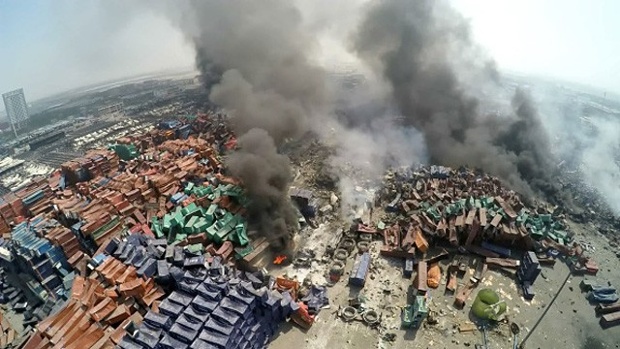-
Tips for becoming a good boxer - November 6, 2020
-
7 expert tips for making your hens night a memorable one - November 6, 2020
-
5 reasons to host your Christmas party on a cruise boat - November 6, 2020
-
What to do when you’re charged with a crime - November 6, 2020
-
Should you get one or multiple dogs? Here’s all you need to know - November 3, 2020
-
A Guide: How to Build Your Very Own Magic Mirror - February 14, 2019
-
Our Top Inspirational Baseball Stars - November 24, 2018
-
Five Tech Tools That Will Help You Turn Your Blog into a Business - November 24, 2018
-
How to Indulge on Vacation without Expanding Your Waist - November 9, 2018
-
5 Strategies for Businesses to Appeal to Today’s Increasingly Mobile-Crazed Customers - November 9, 2018
Tianjin air being tested after explosions
The Tianjin warehouse blasts, which occurred during the late hours of August 12, killed at least 56 people, including 21 firefighters.
Advertisement
The official news agency Xinhua says it is over fears that chemical contamination is spreading.
Firefighters initially responded to a blaze at the warehouse and many of them were apparently killed by a series of explosions triggered 40 minutes after the fire was reported.
Meanwhile, more than 200 nuclear and biochemical experts from the Chinese military and a team from the worldwide Atomic Energy Agency’s Beijing environmental emergency response centre are assessing the area surrounding the blasts.
Chemical safety experts said calcium carbide reacts with water to create acetylene, a highly explosive gas, which could have been the reason behind the second blast when the firemen sprayed the calcium carbide with water.
Furious residents and family members of victims railed against officials outside a press conference in Tianjin, accusing them of keeping them in the dark as criticism over a lack of transparency mounted.
Officials said more than 6,000 residents forced to leave their homes had been relocated at several nearby schools that are being used as temporary shelters.
Of the 721 people injured, 25 are in critical condition and 33 are serious.
Zhou Ti, a 19-year-old firefighter, was pulled from the zone at about dawn on Friday and taken to hospital, where he was treated for face, chest and foot injuries.
Officials have only confirmed that calcium carbide, potassium nitrate and sodium nitrate were at the warehouse.
Presently, it is reported that at least one of the relevant persons in the company have been detained regarding the deadly blasts.
The State Administration of Work Safety, the Ministry of Environmental Protection and various other government departments regulate companies that operate risky materials, said Cheng Qian, Greenpeace’s Beijing-based toxics assistant campaign manager. “I assure my prayers for those who lost their lives and for all those persons tried by this disaster”, he said Saturday in remarks to thousands of people gathered in St. Peter’s Square.
As the industrial fires burned in Tianjin, forest fires farther east also caused smoke to rise over China, according to NASA.
A young firefighter has been recovered from the rubble of the massive, catastrophic detonation in a Chinese port city.
Tianjin, with a population of about 15 million, is being promoted by the Chinese government as a center for finance and high-tech industry.
Wednesday night’s blasts in Tianjin originated at shipping containers owned by a company authorized to handle hazardous material and struck a mostly non-residential warehouse district.
The Tianjin fire brigade said the warehouse contained risky goods, making the fire unpredictable and unsafe to approach.
“Depending upon the amount of sodium cyanide that is there, I would be concerned about the residues of sodium cyanide that may have been distributed across the area, and how that cleanup will be managed”, he says.
Advertisement
On Friday, authorities said they still did not know exactly what type or quantity of chemical was being stored in a warehouse that exploded in the port city.





























